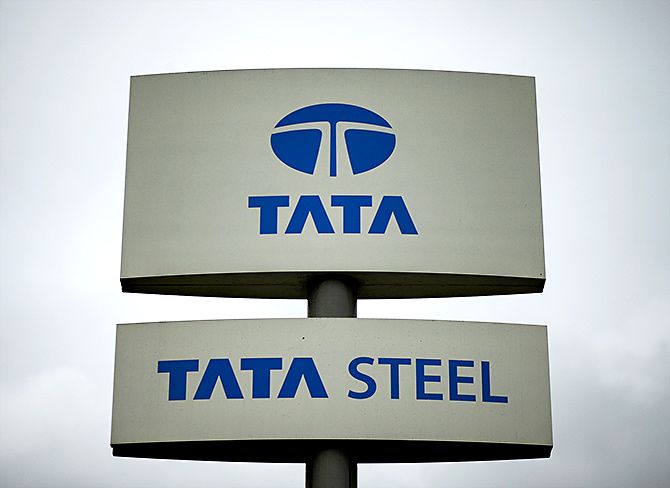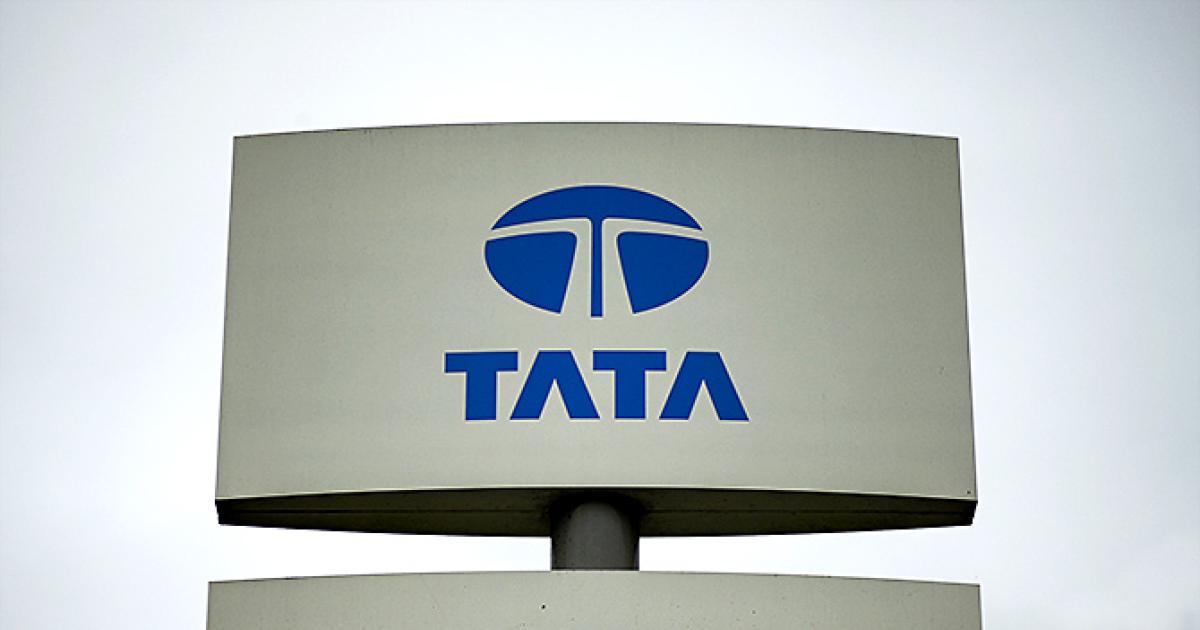Tata Steel on Wednesday reported a 272 per cent year-on-year (Y-o-Y) jump in consolidated net profit, attributable to owners, at Rs 3,101.75 crore in the second quarter of 2025-26 (Q2FY26) led by higher sales volumes in India and planned cost takeouts across geographies.

Photograph: Phil Noble/Reuters
The steel major’s net profit in the year-ago period had stood at Rs 833.45 crore.
Total revenue on a consolidated basis in Q2FY26 was Rs 58,689.29 crore, up 8.9 per cent Y-o-Y. Both revenue and net profit came in ahead of the Bloomberg consensus estimate of Rs 55,897.6 crore and Rs 2,739.6 crore, respectively.
Sequentially, revenue was up 10.4 per cent and net profit 49.3 per cent.
Commenting on the performance, T V Narendran, managing director and chief executive officer (MD&CEO), Tata Steel, said: “The global operating environment remained challenging, with persistent overhang of tariffs, geopolitical tensions, and elevated steel exports.
“Despite this, Tata Steel delivered a resilient performance, with the Ebitda (earnings before interest, taxes, depreciation, and amortisation) margin improving for the second consecutive quarter.”
“In India, while crude steel production rose 8 per cent, deliveries grew at a higher rate of 17 per cent quarter-on-quarter (Q-o-Q) as our marketing franchise enabled us to scale effectively,” he added.
Tata Steel India reported a turnover of Rs 34,787 crore in Q2FY26 compared to Rs 32,660 crore in the year-ago period.
Reported profit after tax (PAT) was at Rs 4,215 crore during the quarter as against Rs 3,460 crore a year back.
Narendran said that the company continues to strengthen its market leadership across key segments, underpinned by capacity expansion and a focused downstream strategy.
As part of growing the India downstream portfolio, Tata Steel has executed a share purchase agreement with BlueScope Steel to acquire the balance 50 per cent stake in Tata BlueScope Steel Private Limited for a cash consideration of Rs 1,100 crore.
The transaction is expected to be completed within a period of 3-4 months, subject to completion of conditions precedent, including approvals from regulatory authorities and other stakeholders as applicable, the company mentioned in a regulatory filing.
Koushik Chatterjee, executive director and chief financial officer (ED&CFO), said the performance was underpinned by a sharp focus on cost transformation programme, which delivered around Rs 2,561 crore for the quarter, and around Rs 5,450 crore for the half year of 2025-26 (H1FY26).
The India performance was aided by strong growth in volumes.
Tata Steel spent Rs 3,250 crore on capital expenditure during the quarter and Rs 7,079 crore for the half year.
Tata Steel Europe
In the Netherlands, revenues were 1,551 million euro and Ebitda was 92 million euro compared to 64 million euro in Q1FY26. Liquid steel production was 1.67 million tonnes (mt) and deliveries were 1.54 mt.
In the UK, revenues were 505 million pound and Ebitda loss stood at 66 million pound compared to a loss of 41 million pound in Q1FY26.
Deliveries stood at 0.57 mt and were marginally lower due to subdued demand.
Chatterjee said: “In line with efforts to optimise debt portfolio, we have reduced Tata Steel UK (TSUK) debt by 540 million pound during the quarter, and our consolidated gross debt has decreased by around Rs 3,300 core Q-o-Q to Rs 95,643 crore.”
He said that the company remains focused on volume growth in India, strengthening raw material linkages and optimising capital allocation.
“We are closely monitoring policy developments in the EU and the UK, and will look to prioritise, optimise and sequence the decarbonisation capex spend in such a manner that it is affordable to all stakeholders,” Chatterjee said.



